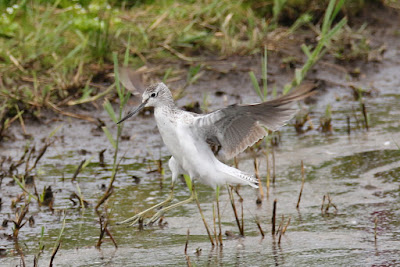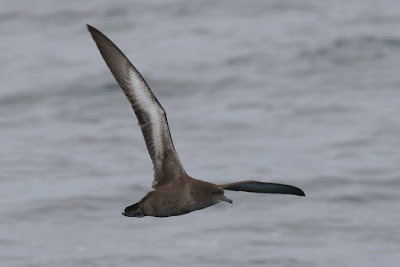...of Shearwaters. That's the collective noun New Zealanders apparently give to this family (I can't find an English equivalent despite, ooh, 30 seconds of extensive research). We call it a raft, of course, when groups of them are sitting on the water, but that doesn't quite capture the way these birds are best enjoyed: shearing, as the name suggests, low over the sea. Four pelagics out of St Mary's in mid-August provided ample opportunity for me to practice. Best efforts below.
First up, the Great Shearwater, which, having bred on islands in the South Atlantic, winters during our summer off the coast of North America, passing through our waters on its southward migration. We saw this species on every trip, and they often followed the boat.
Next up, the Sooty Shearwater, another southern hemisphere breeder which spends its winter (our summer) north of the equator. Again, its southward migration brings it to our coastal waters. Several of these were seen over the long weekend, some coming in to investigate what we were leaving in our wake.
Next up, the Balearic Shearwater, which breeds much closer to home as the name suggests, but is much rarer globally than the other two - in fact, one of the rarest birds globally to regularly grace this country. Good numbers have been seen passing seawatching hotspots this year so hopefully that's a good sign. This one came in behind the boat and stuck with us for a while, risking attacks from gulls to dive for food just off our stern.
And finally, our very own Manx Shearwater, most of whose breeding population can be found in Britain and Ireland, including some on Scilly. 2014 saw Manxies successfully fledge young on the archipelago for the first time in a long time following a rat eradication programme.
Marvellous birds, every one, which with the Fea's, Wilson's and Storm Petrel, brought the photo year list up to #212.


















































